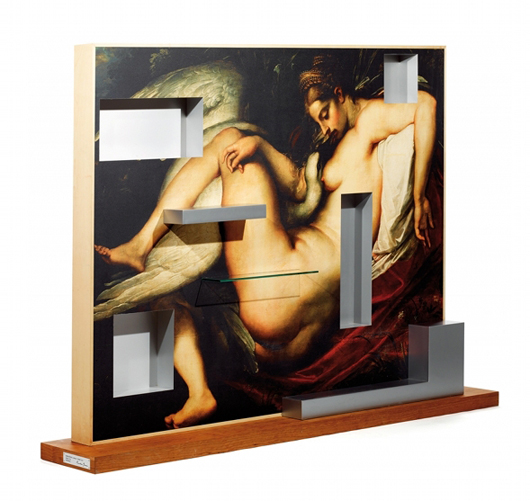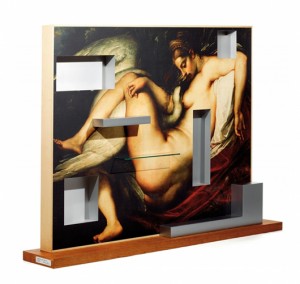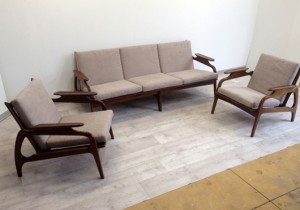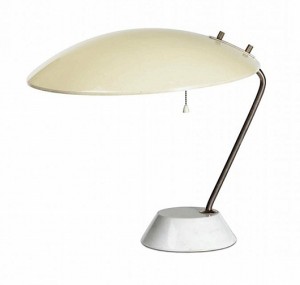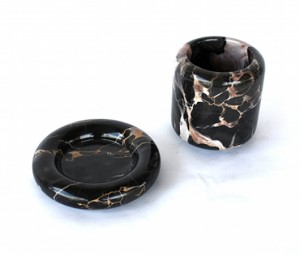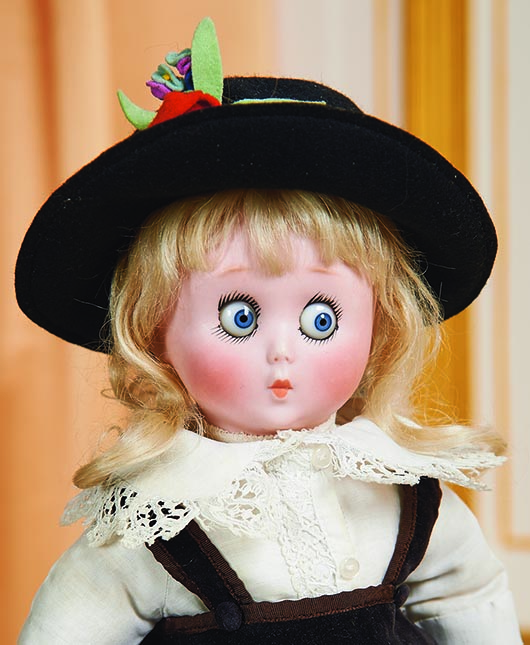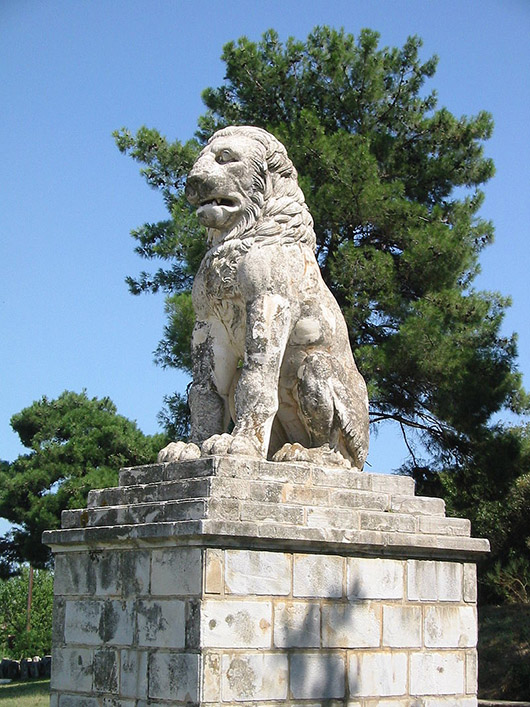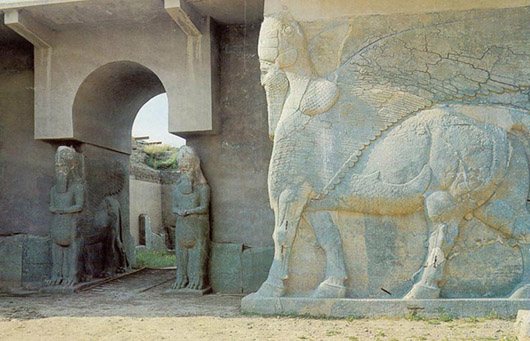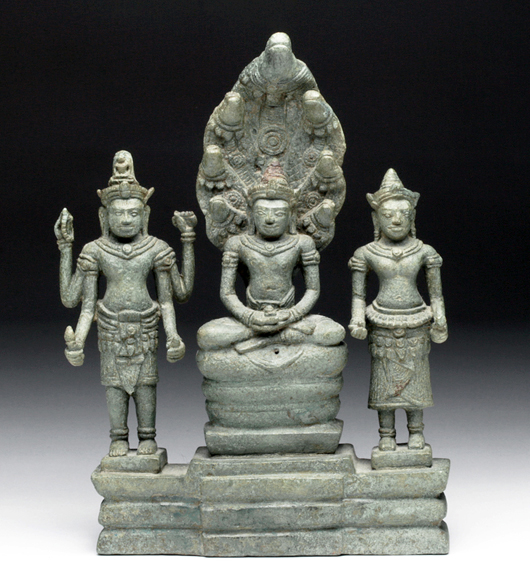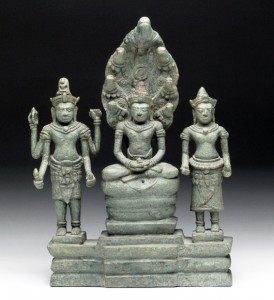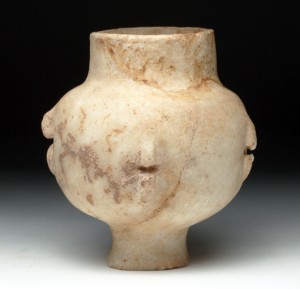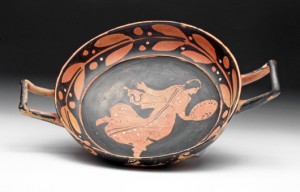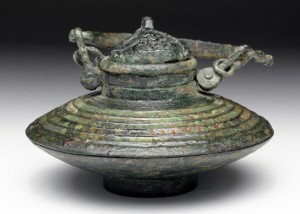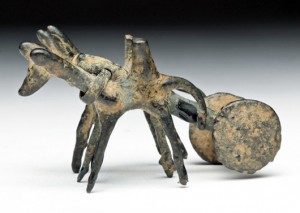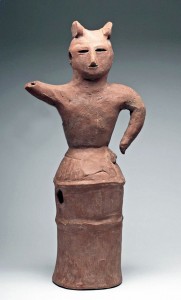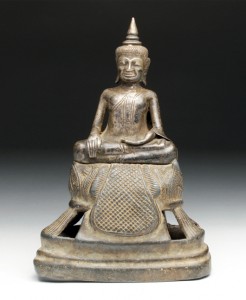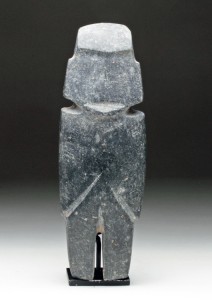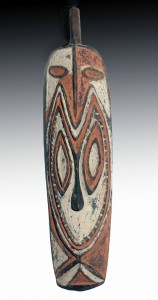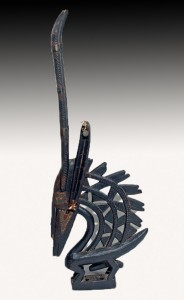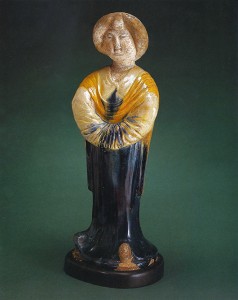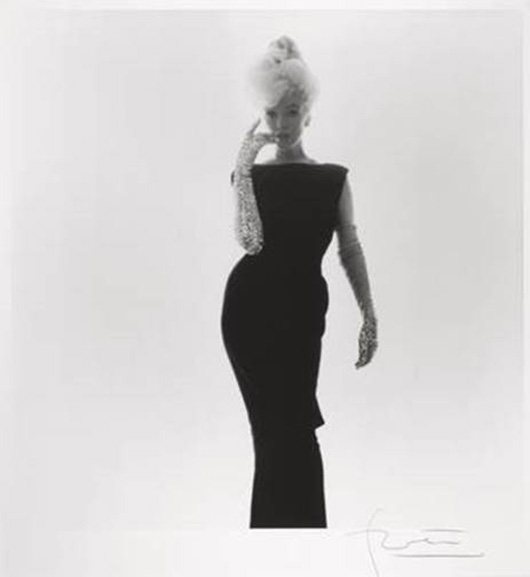BEACHWOOD, Ohio – Dolls seldom look like real babies or children. Today there are dolls with oversized heads, exaggerated bodies, or monster or cartoon shapes. There were many earlier dolls that had unusual features or expressions. Googly-eyed dolls were popular in the 1920s. One type was made under the 1927 copyright of Oscar Hitt, an American illustrator and cartoonist. Some of his characters were turned into dolls by George Borgfeldt in Germany. The bisque head has a flanged neck. The face has side-glancing eyes with thick dark eyeliner and curly eyelashes, a tiny nose and either painted hair or a wig. These dolls are rare and one sold in January 2015 at a Theriault’s auction in Annapolis, Maryland, for $23,940.
Q: I recently bought a dining-room set that includes an octagonal table, six chairs, and a buffet. The buffet has two drawers over four louvered doors. The owner said the set is oak and belonged to her mother 50 years ago. Inside the buffet drawers it indicates it was made by A. Brandt of Fort Worth, Texas. Can you tell me something about the maker and age of this set?
A: August Brandt founded A. Brandt Co. in 1900. The family sold the company in 1986. It went out of business and the remaining inventory was auctioned off in 1988. The company’s popular Ranch Oak line of furniture carved with western designs was introduced in 1938. It was sold nationwide and also was made for lodges in the national parks.
Q: I’ve been collecting lady head vases for about 25 years. I would like to know what they are worth.
A: lady head vases, usually showing a pretty woman from the shoulders up, were used by florists primarily in the 1950s and 1960s. They are often decorated with imitation jewelry and other accessories. They became a “must-have” for a few years – collectors books were written, clubs formed and prices went up. Then the collectors lost interest and prices fell to the present low level. Most head vases were made in Japan and the United States. Lady head vases of a famous person or with imitation jewelry or other added accessories sell for the highest prices. Common lady head vases sell for $25 or less, while a Jackie Kennedy lady head vase has sold for over $100.
Q: I recently restored a 150-year-old Italianate-style home. It has a pair of brass and metal gas-powered chandeliers made by Christian Cornelius of Philadelphia. Each has six glass globes. They are original to the house. All my antiques friends have given their opinions as to the value, but I’d like to get your expert advice.
A: Christian Cornelius was a Dutch silversmith who immigrated to the United States in 1783. He began making lamps in 1825 and started Cornelius & Co. with his son in 1827. It became the largest manufacturer of lighting in the U.S. Christian died in 1851. Family members ran the company under various names until 1900. Lighting fixtures made by Cornelius & Co. and its successors were used in many state capitol buildings in the U.S. and in countries around the world. One can sell for several thousand dollars today. A six-light Cornelius & Co. chandelier could sell for as much as $7,000 to $10,000, but the price depends on condition and the design details.
Q: In 1952, I bought an antique map at Marshall Field in Chicago. It shows the Western and Eastern hemispheres, with Australia identified as New Holland and the center of Africa as “parts unknown.” At the bottom, in small print, it reads: “London, published by J. Cary, engraver and map seller, 181 Strand, 1819.” The map is 22 by 36 inches. Value?
A: Many of our readers may not realize that large department stores like Marshall Field had specialized departments where antique maps were sold to collectors. Your 1819 map was engraved by John Cary (1754-1835), a well-regarded London engraver and mapmaker. An 1819 Cary world map the same size as yours auctioned a few years ago for more than $500. The value of yours would also depend on its condition.
Q: When my father moved into his house in 1957, he discovered the previous owner, a physician, left an old examining table. I think the table was old even then. It’s made of wood. One side of the tabletop can be lifted up to serve as a backrest, and there are stirrups that can be extended from the other end. A shelf is below the top, close to the floor. It is labeled, “W.D. Allison Co., Indianapolis, Ind.” Is the table of any value?
A: W.D. Allison Co. started out as G.H. Clark & Co. in 1882. Its name became W.D. Allison in 1893. The company became a large manufacturer of medical and dental chairs, tables, cabinets, bookcases, instrument tables and wheelchairs. Allison grew to have branches in New York, Chicago, St. Louis and San Francisco. Your table, if in good condition, could sell for a few hundred dollars.
Tip: Veneered furniture should not be placed near steam radiators, open windows, or groups of potted plants. The veneer eventually will “bubble” from the moisture.
Terry Kovel and Kim Kovel answer questions sent to the column. By sending a letter with a question, you give full permission for use in the column or any other Kovel forum. Names, addresses or email addresses will not be published. We cannot guarantee the return of photographs, but if a stamped envelope is included, we will try. The amount of mail makes personal answers or appraisals impossible. Write to Kovels, Auction Central News, King Features Syndicate, 300 W. 57th St., New York, NY 10019.
Sign up for our free weekly email, “Kovels Komments.” Terry Kovel writes about the latest news, tips and questions and her views of the market. If you register on our website, there is no charge.
CURRENT PRICES
Current prices are recorded from antiques shows, flea markets, sales and auctions throughout the United States. Prices vary in different locations because of local economic conditions.
- Carnival glass bowl, Blackberry Wreath, green satin, 16 panels, crimped rim, Millersburg, 2 3/8 x 8 3/4 inches, $60.
- Pembroke table, Federal style, mahogany, bow front drawer, tapered legs, Kittinger, 20th century, 38 inches, $240.
- Dr Pepper fan pull, Drink a Bite to Eat, pumpkin head man, two-sided, cardboard, 1930s, 7 inches, $300.
- Sterling silver bowl, pierced, reticulated, monogram, Graff, Washbourne & Dunn, circa 1945, 2 1/2 x 11 inches, $345.
- Gumball vending machine, coin-operated, dome glass, Vendex Co., circa 1927, 12 1/2 inches, $390
- Pin, micro mosaic, Pantheon, Rome, onyx tablet, gold frame, C-hook bar pin, 2 x 1 1/2 inches, $405.
- Redware charger, slip design, cream, green zigzag border, Bristol, Connecticut, circa 1850, 13 inches, $600.
- Picture, watercolor on board, Edge of Night, signed, Viktor Schreckengost, frame, 39 x 49 inches, $1,380.
- Pedal toy car, open, red body, spoke wheels, wood frame, Brighton Mfg., 1907, 45 inches, $1,440. Tole tray, mermaid, courting sailor, ships, whales, sea, cutout handles, paint, M. Cahoon, circa 1980, 15 x 20 inches, $2,640.
Keep up with changes in the collectibles world. Send for a free sample issue of the 12-page, color-illustrated newsletter, “Kovels on Antiques and Collectibles,” filled with prices, news, information and photos, plus major articles and opinions about the world of collecting. An important tool for anyone who buys or sells antiques and collectibles. To subscribe at a bargain $27 for 12 issues, write Kovels, P.O. Box 8534, Big Sandy, TX 75755; call 800-829-9158; or subscribe online at KovelsOnlineStore.com .
© 2015 by Cowles Syndicate Inc.







